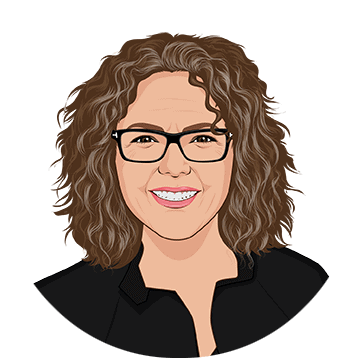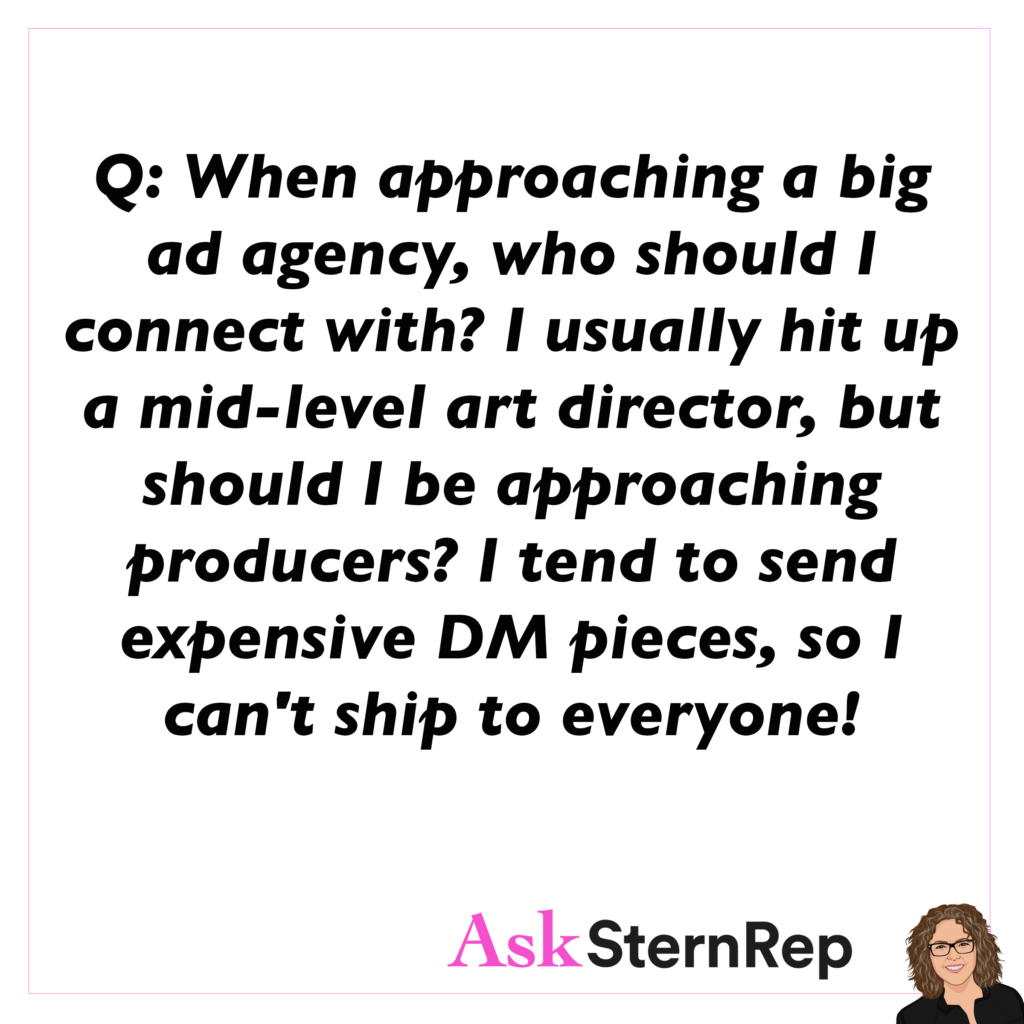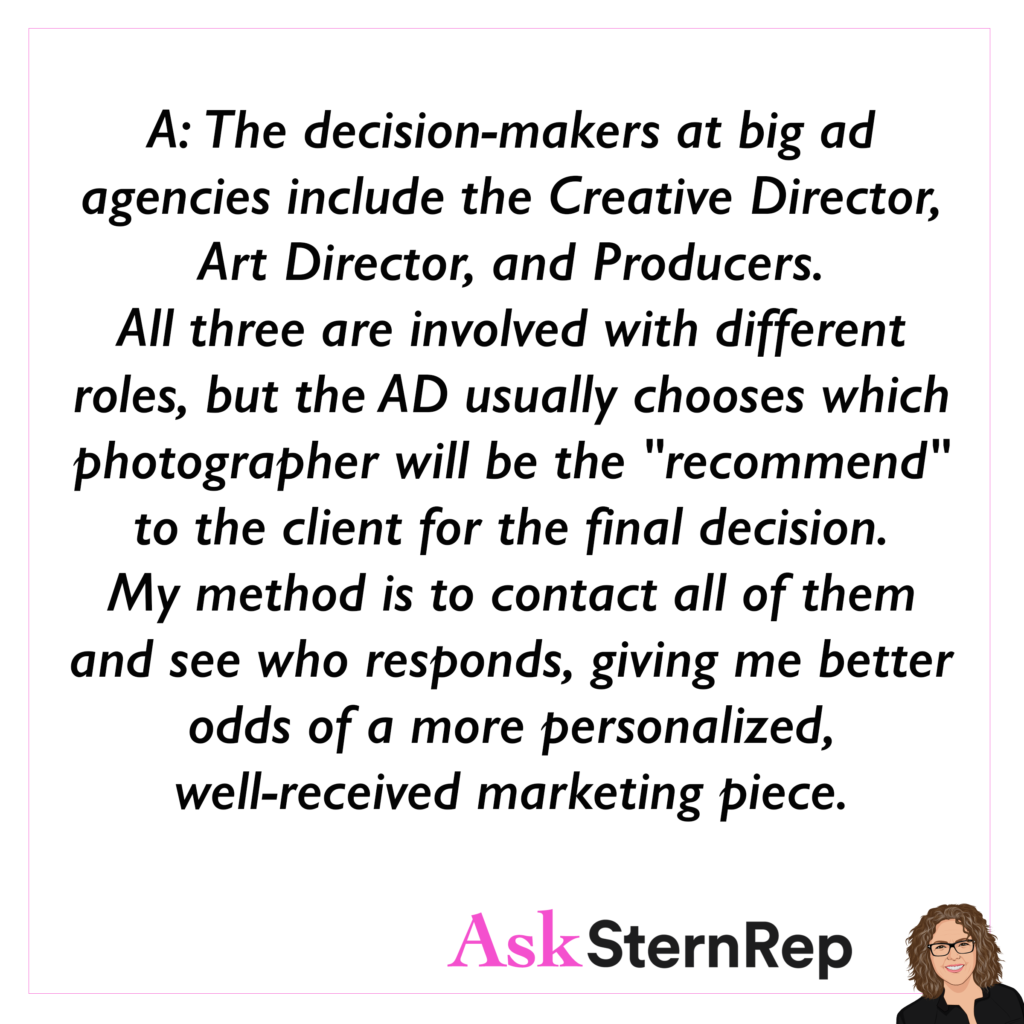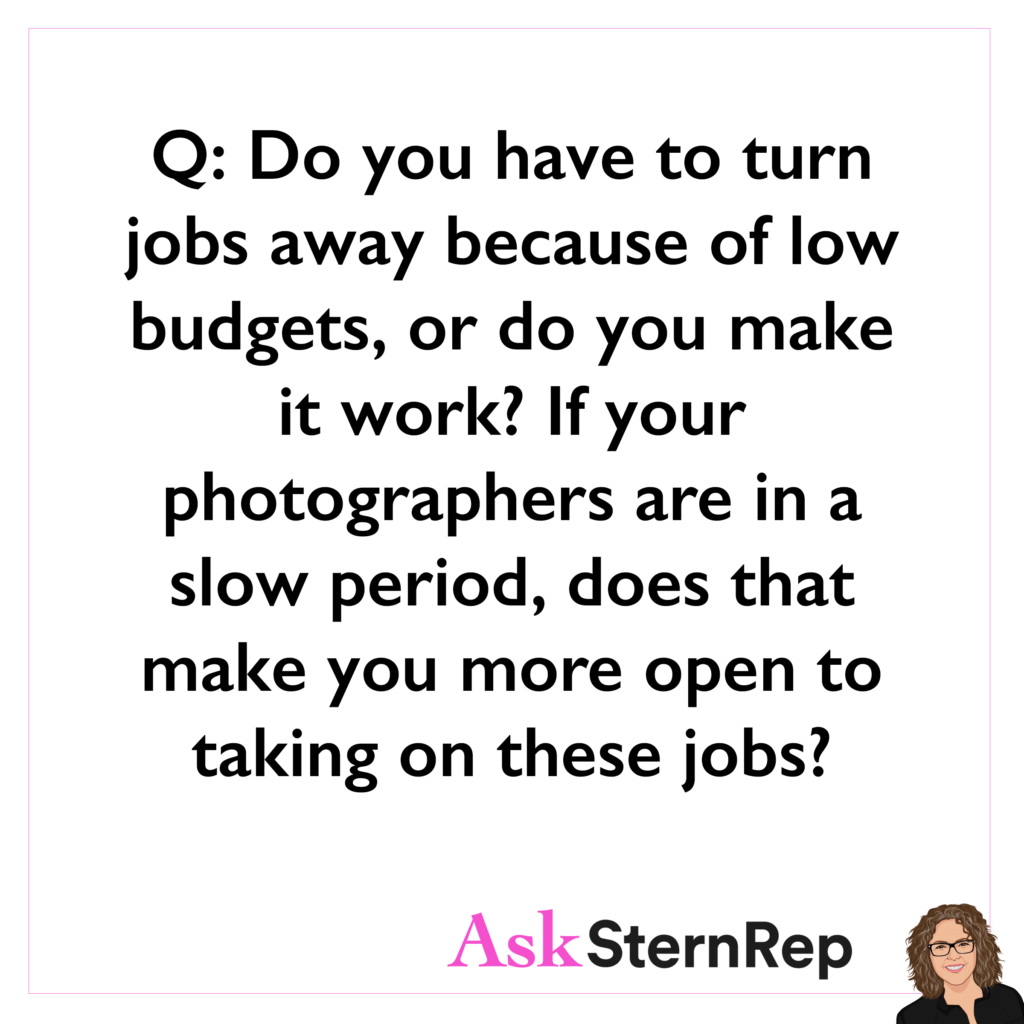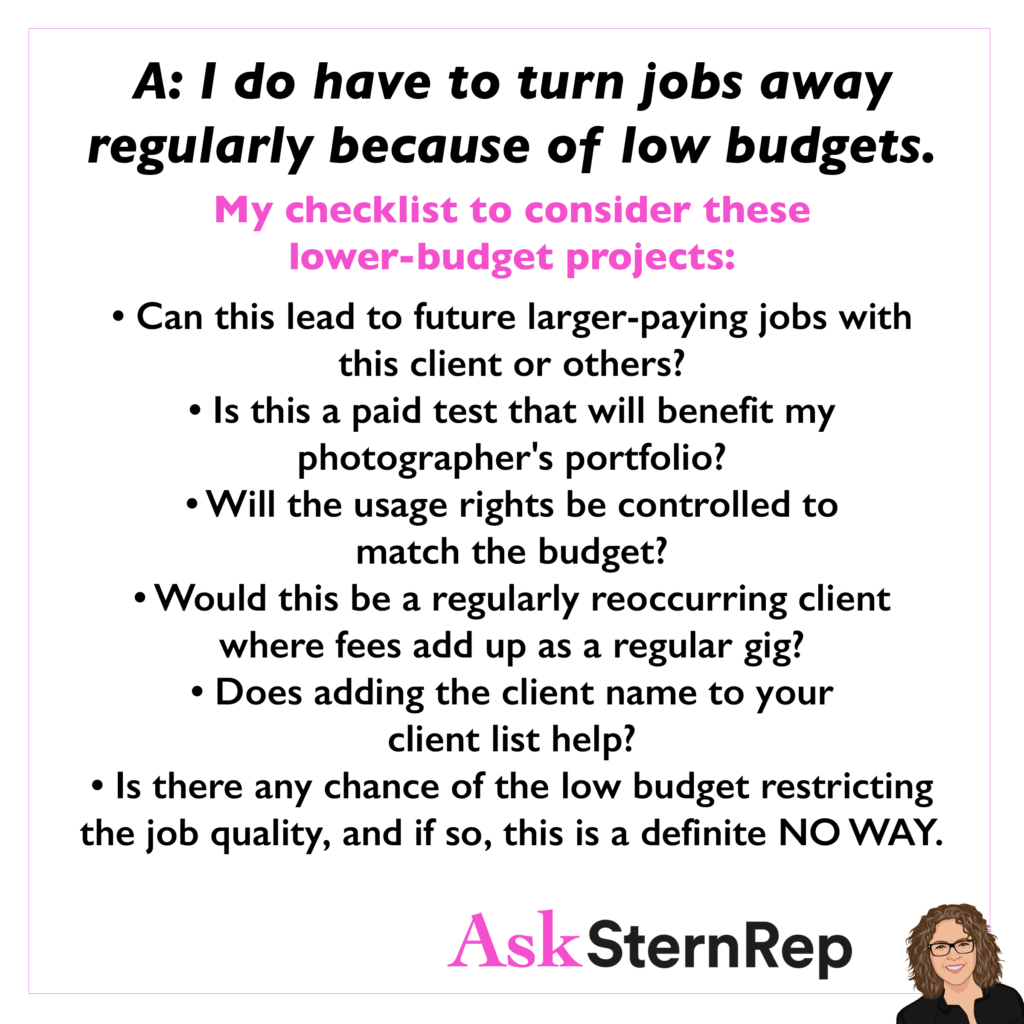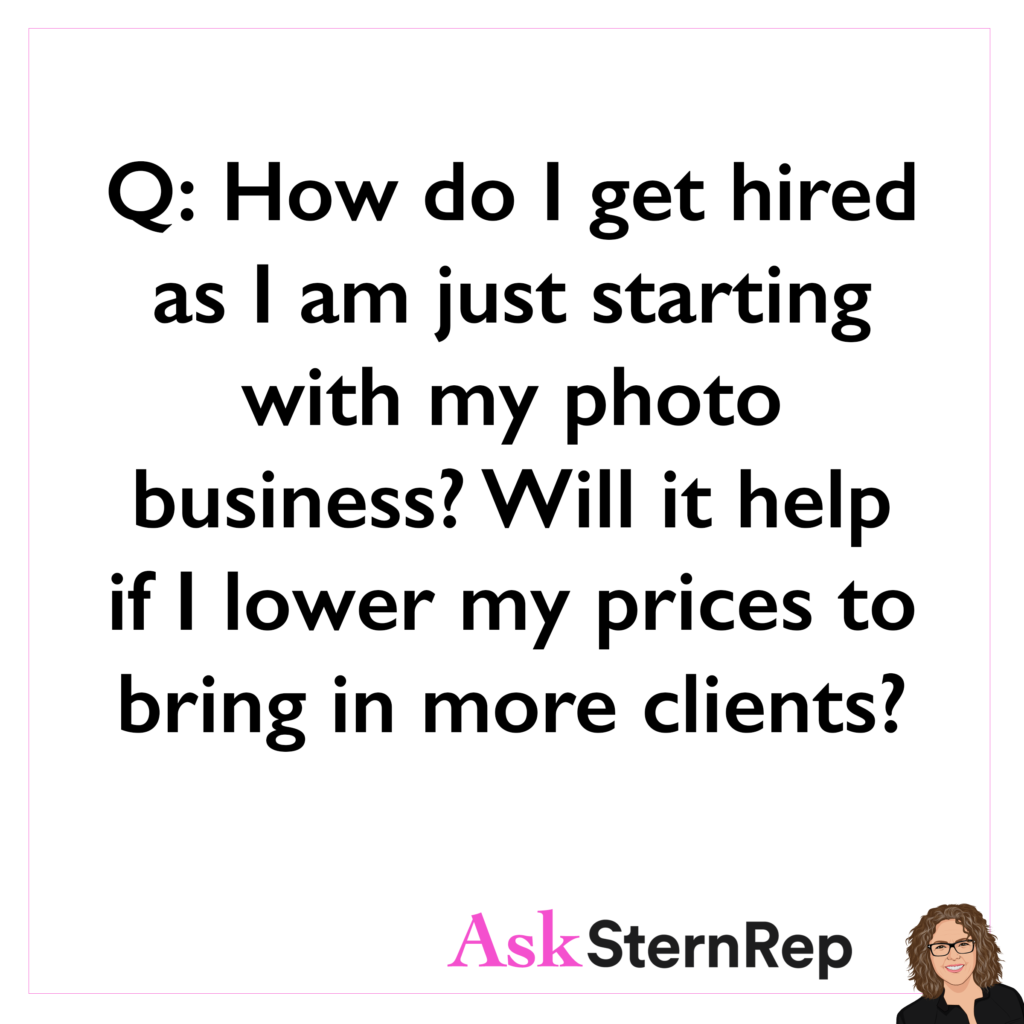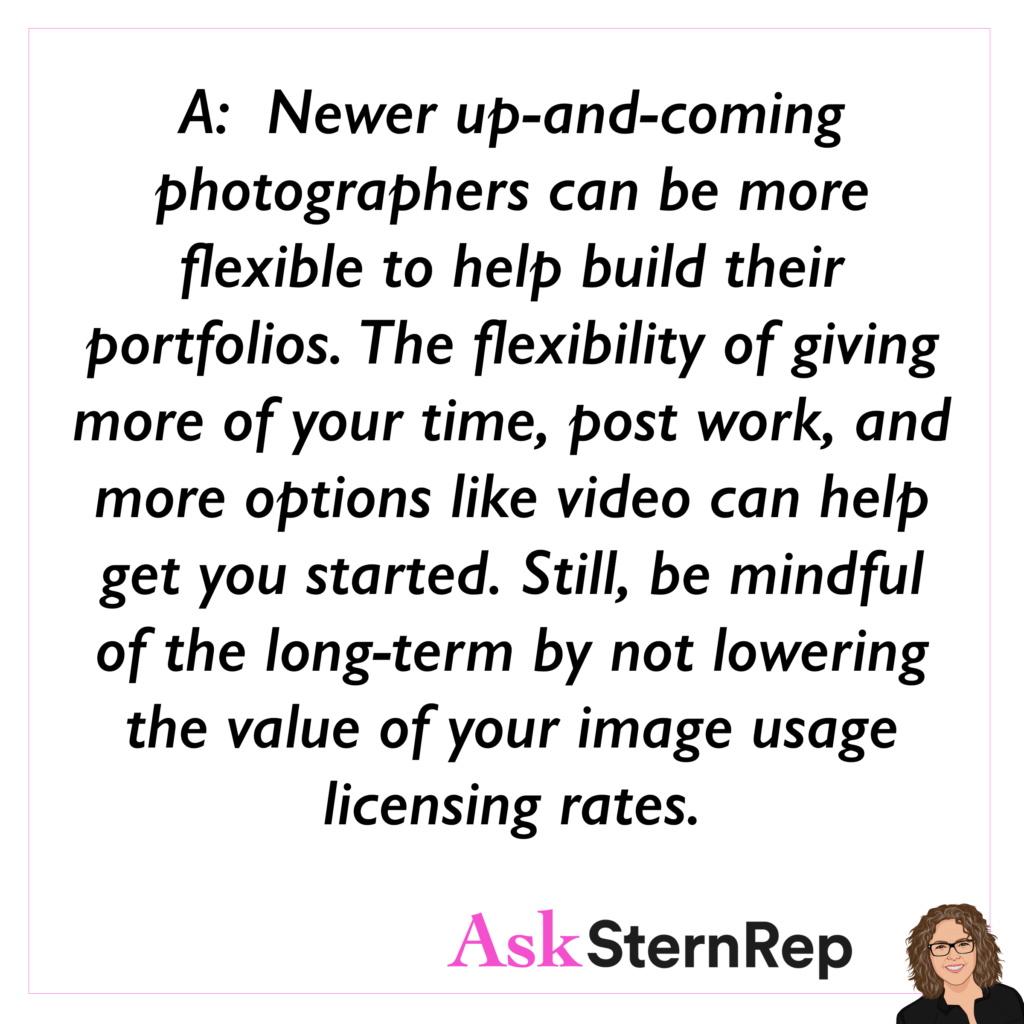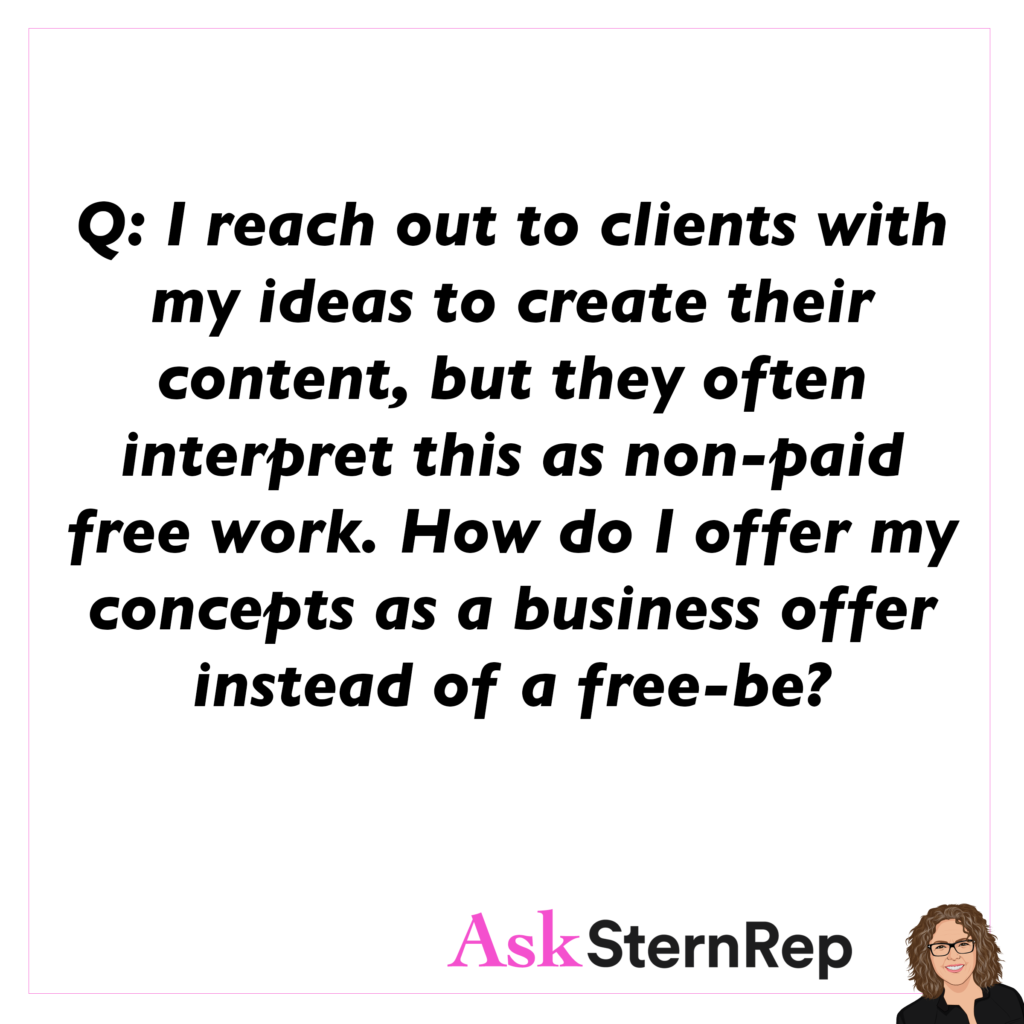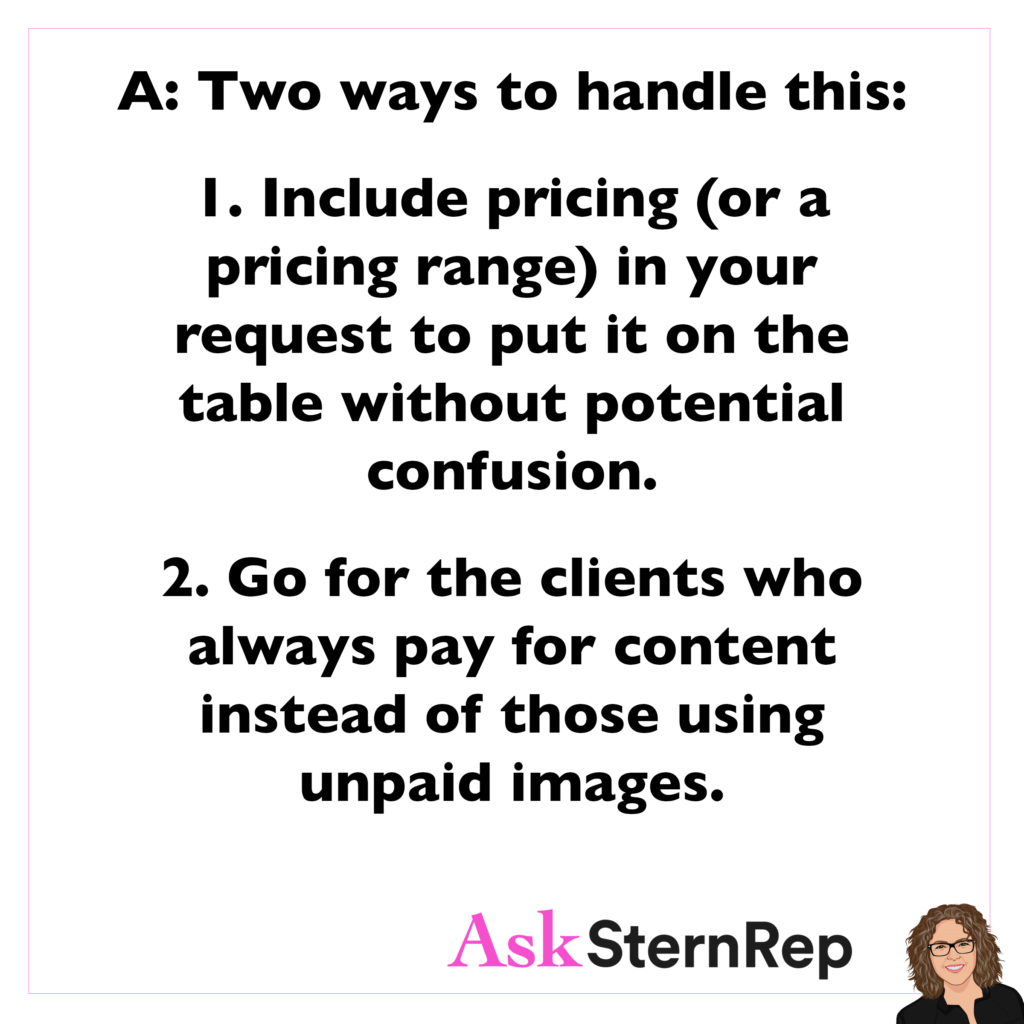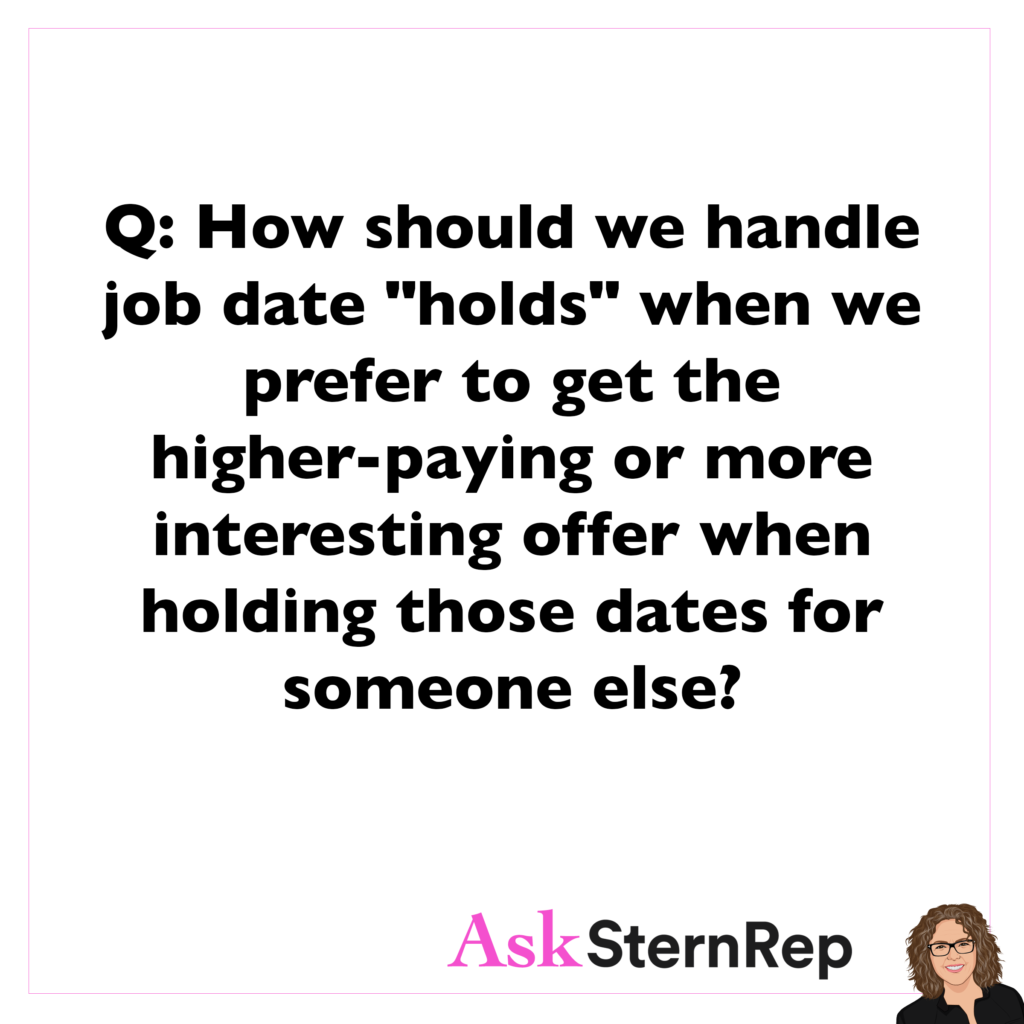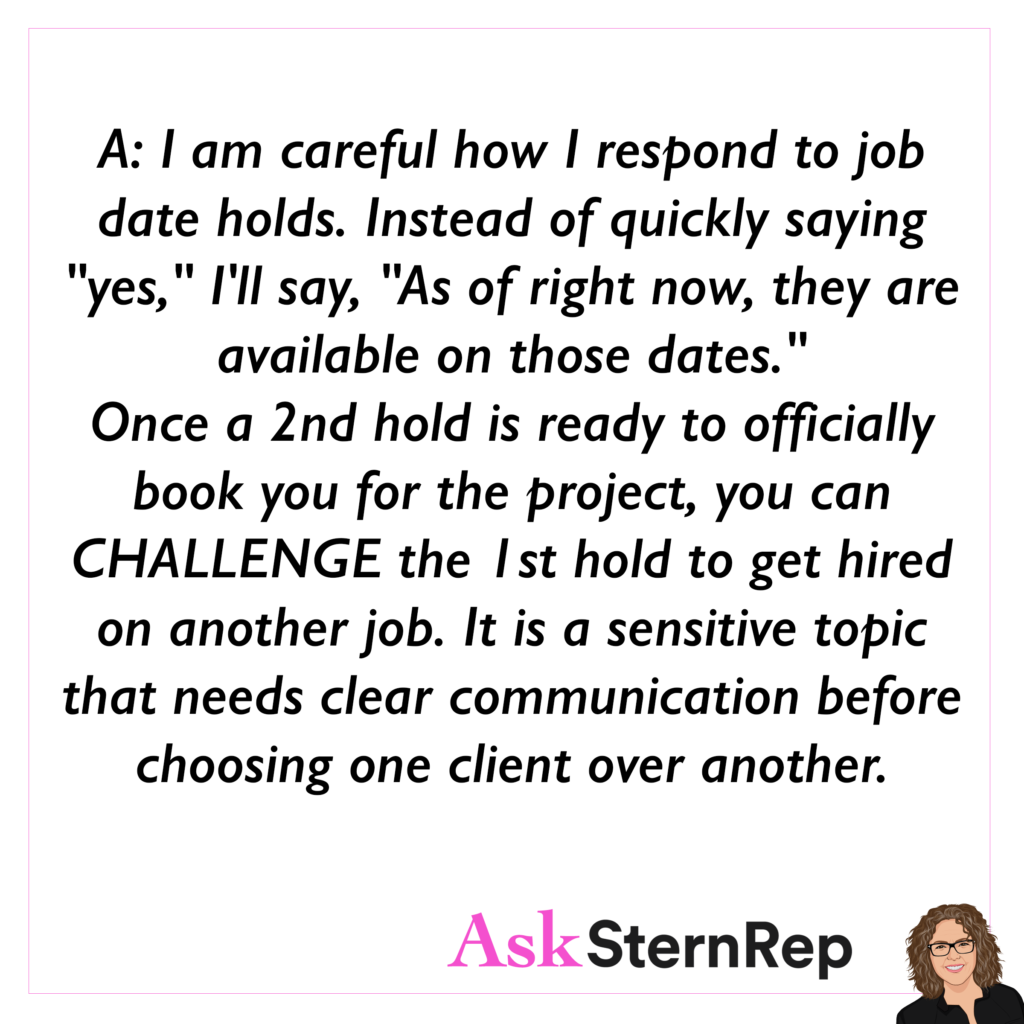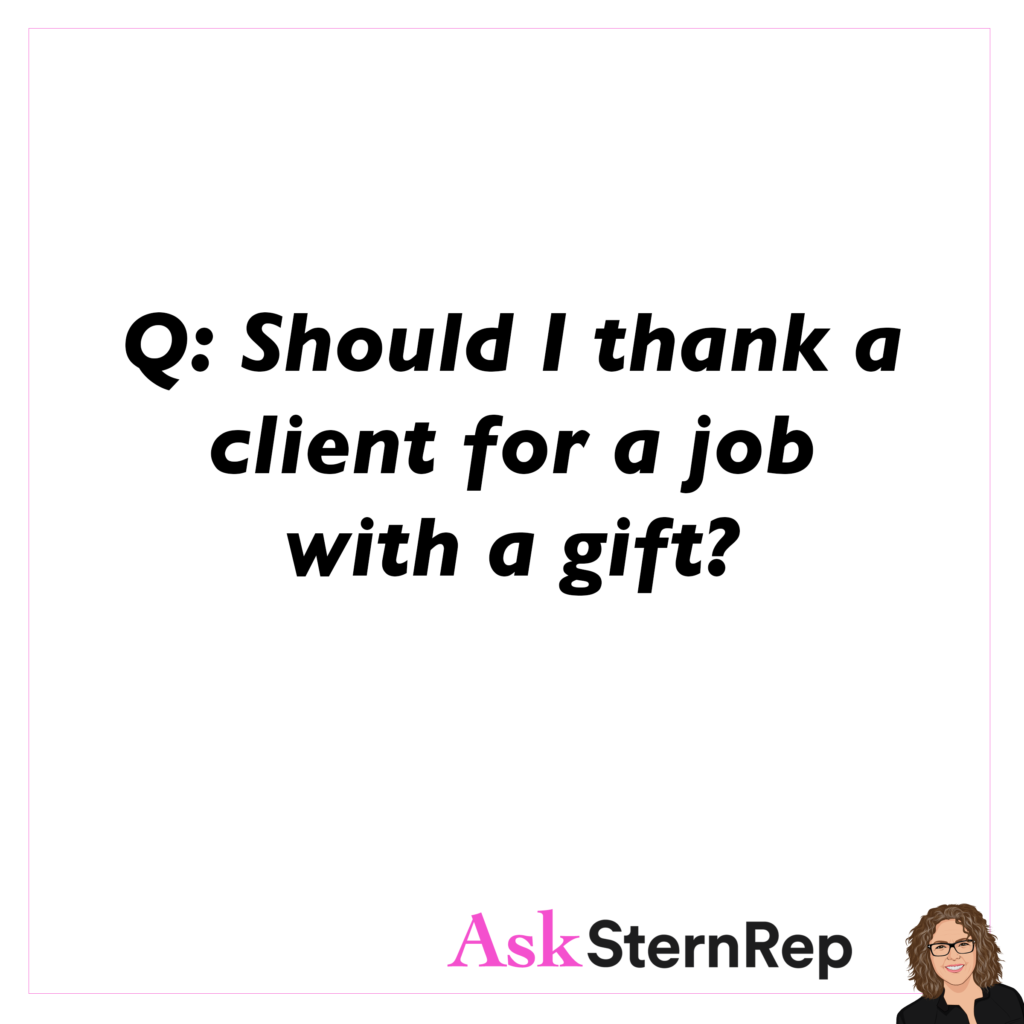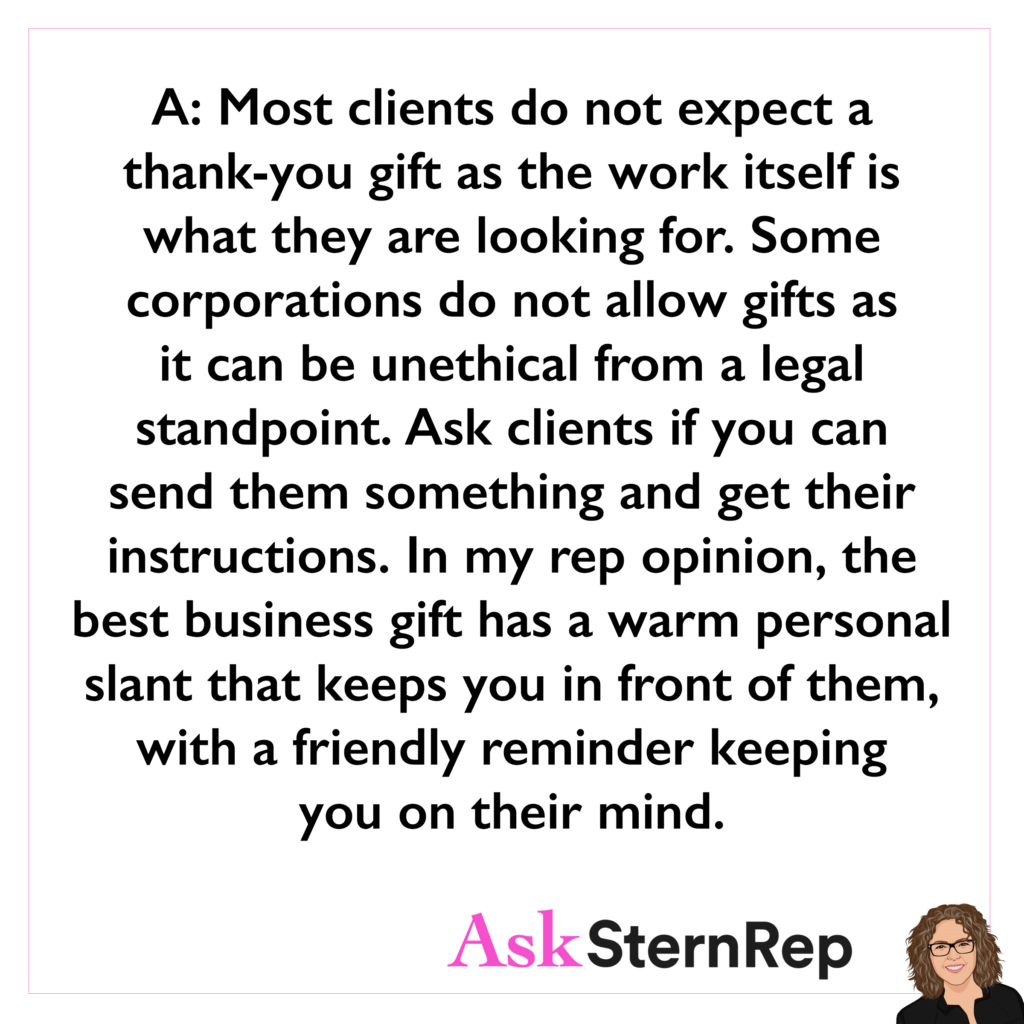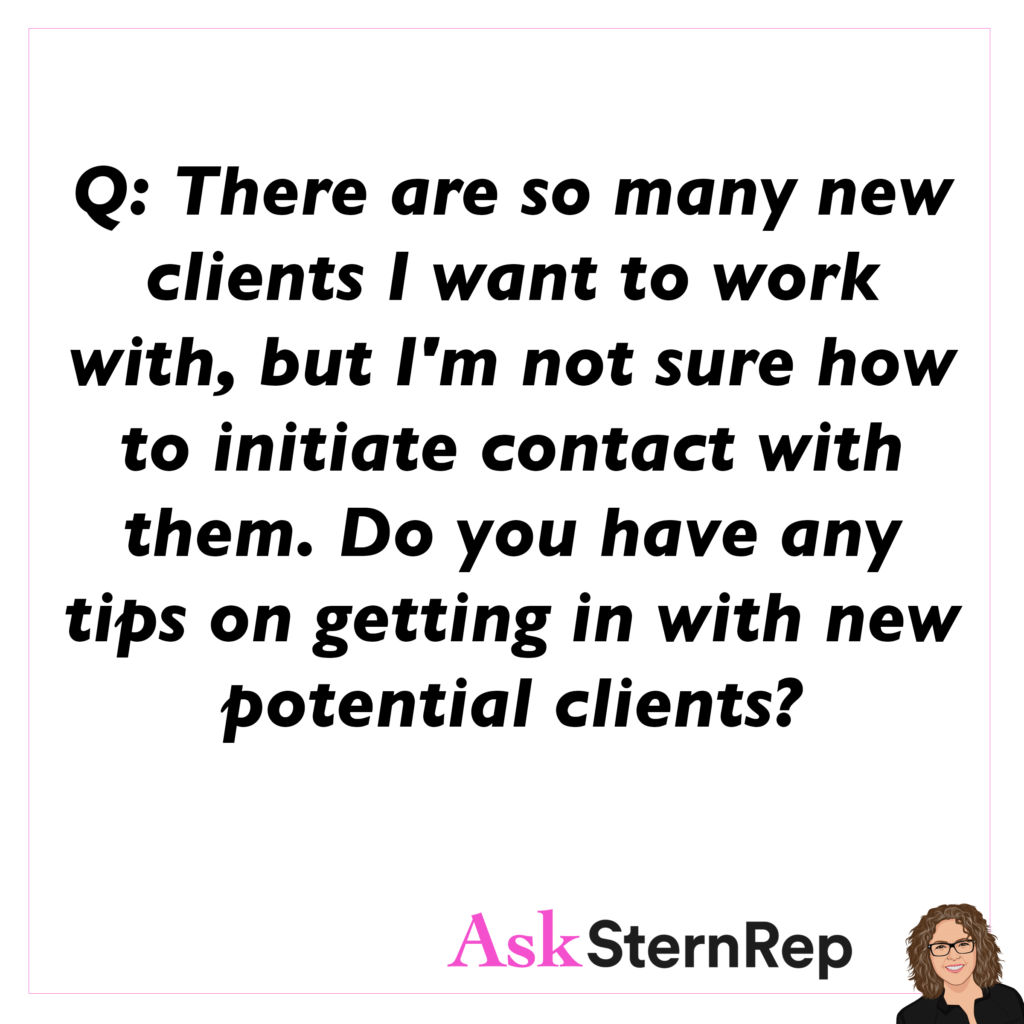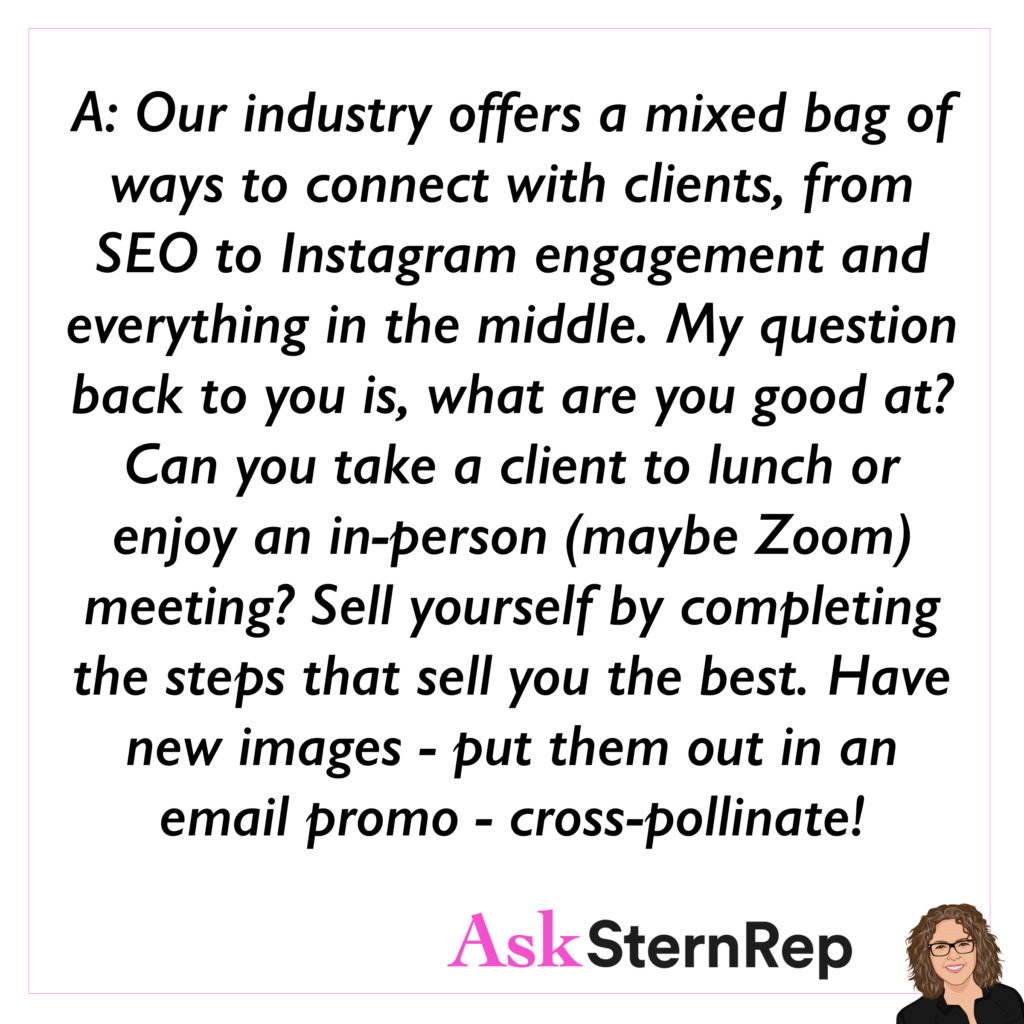
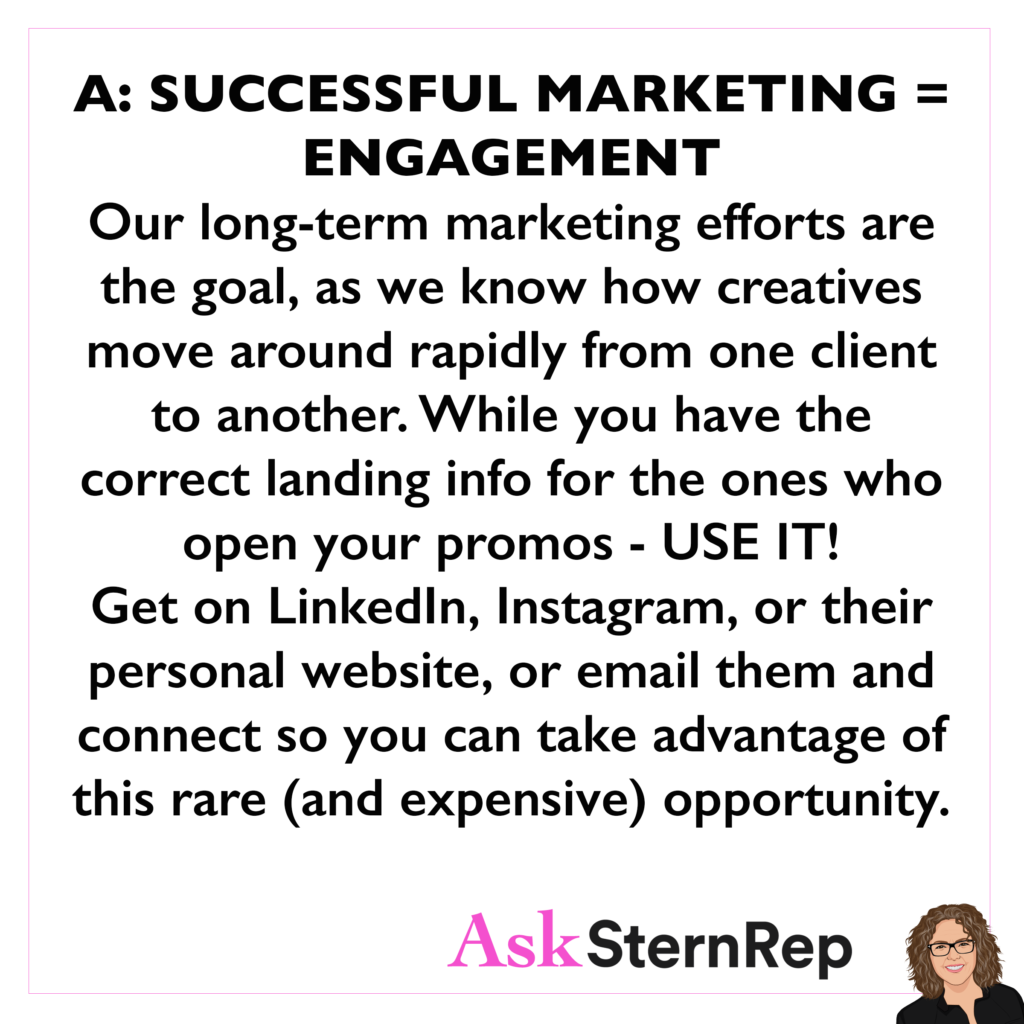
Q:
How do I follow up with someone who appears to have opened my newsletter repeatedly, but I don’t have any relationship with them, and their agency doesn’t appear to do work that aligns with mine? This makes it hard even to know what to send as a follow-up. It’s hard to know how to open the conversation without the incredibly creepy “I see you’ve been opening my newsletter a lot this week.”
A:
SUCCESSFUL MARKETING = ENGAGEMENT
Our long-term marketing efforts are the goal, as we know how creatives move around rapidly from one client to another. While you have the correct landing info for the ones who open your promos – USE IT! Get on LinkedIn, Instagram, or their personal website, or email them and connect so you can take advantage of this rare (and expensive) opportunity.
